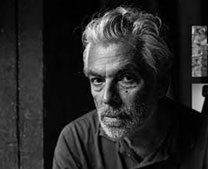


Arthur Sukiasyan: Our Atlantis
It’s an inviting start: Beautiful Istanbul, boats on Bosphorus, people fishing on the bridge, a man in a car, a man doing dummies for clothes, a woman taking out her photo album and more people getting ready to tell what they remember… Back to the man in the car. He is on his way to the place, where he was decades ago, in the 1960’es, to an Armenian camp in Istanbul. “I spent my childhood here”, he says emotionally affected upon arrival to the abandoned building.
Cut to the next storyteller and the next and the next. Slowly the mosaic is put together. There was an Armenian school, there was a charismatic leader of the school, Hrant Gyuzelyan, who did not allow the children to speak Turkish, hard discipline at that time, and according to one of the characters he was the one who insisted on the camp to be built. Otherwise the children would go back to Anatolia, to their villages and forget about the Armenian language and culture they had learned in the school. Some lived at the camp for months, some for years.
Gyuzelyan is the hero of the film, many recall how he went from village to village in Anatolia to find Armenian culture still alive after 1915, where those
who survived the genocide were scattered all over Turkey. Without being demonstrative the director succeeds to make the memories come out in a gentle manner, sometimes in magical sequences as one in the countryside with an old couple, who was in the camp, that was built by the kids. Hard work they say, but also fun as documented by the many archive photos that have been at the disposal of the director. The food they ate, the smells of certain dishes, the tours to the sea. The good things remembered.
Half way through the film, the mood changes from recalling memories to answers to the question – why was the camp closed, why was Gyuzelyan arrested, and what about the Armenians in Turkey today. The arrest – apparently because the Turkish government accused him to kind of “kidnap” children, bring them to the camp and make them terrorists. He was quickly released but left the country, the camp was closed – and the Armenians in the film discuss how it could be possible to get the property back according to public law…
The tension grows in the last part of the film. The most outspoken of the Armenians is Karapet, who claims that between 60-65.000 Armenians are living in Istanbul today, whereas 5.5 million Armenians “were converted to islam”, “living with a Turkish identity”. He argues that the majority dares not to raise their voice against the Turkish government. His attitude towards muslims is not very positive, rather pejorative – and “an Armenian can only live with an Armenian”.
The films ends with a party in the abandoned camp, it’s both joyful and sad.
As is the film the whole way through, character-driven, showing human beings who are victims of history. When broadcasters plan their repertory for 2015 with the Armenian genocide as the theme this important documentary is an obvious choice. The film has not yet had its international premiere. Come on festivals!
France, Armenia, Turkey, 2014, 83 mins.